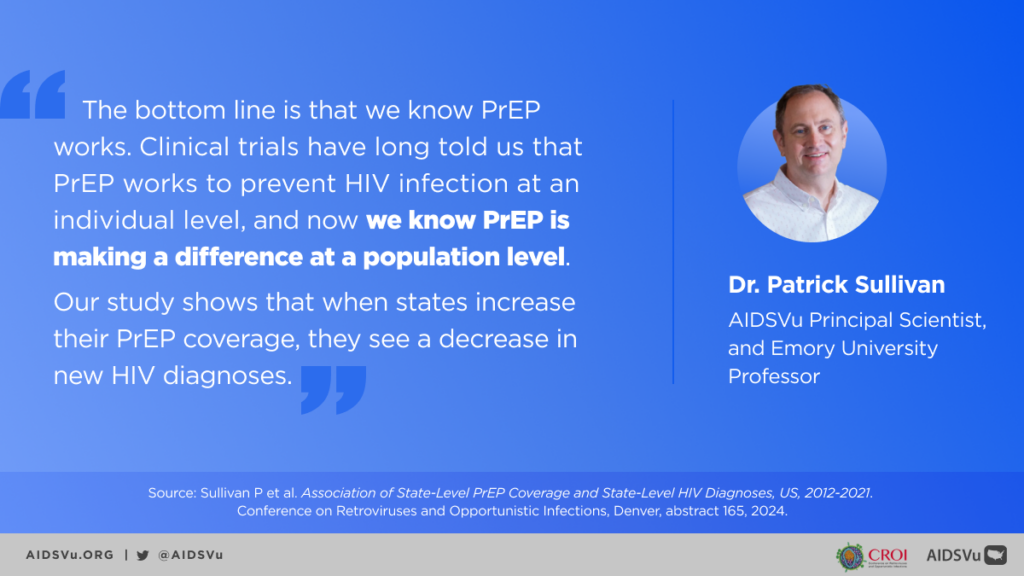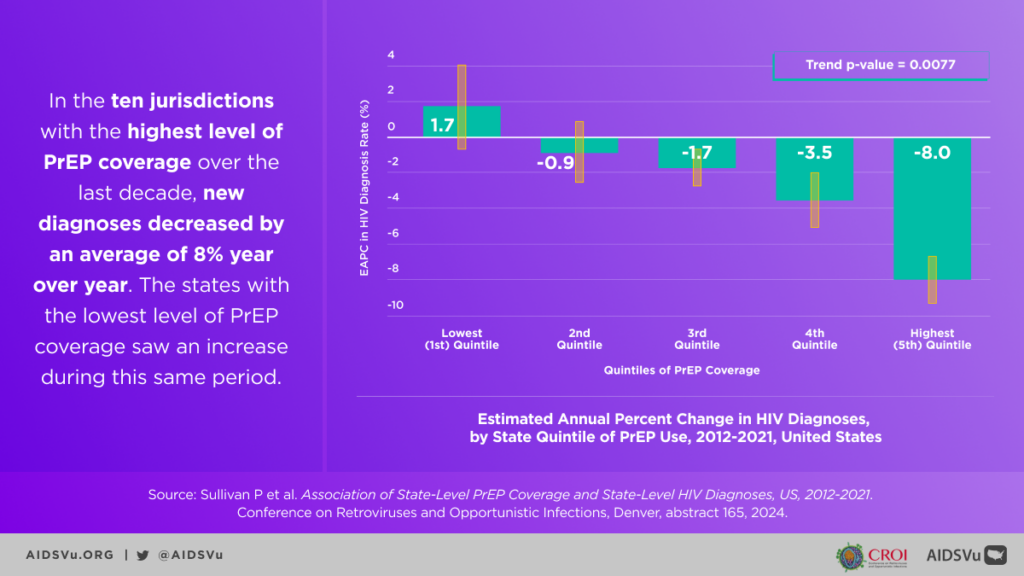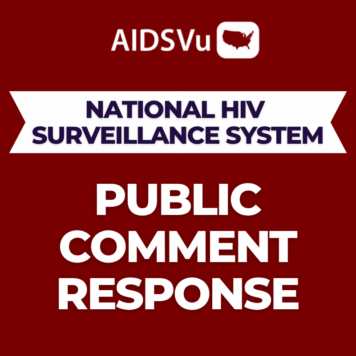Clinical trials proved that PrEP works at the individual level; new analysis shows that PrEP works at a population level
Earlier this month at the Conference on Retroviruses and Opportunistic Infections (CROI), Dr. Patrick Sullivan, AIDSVu Principal Scientist and Emory University Professor, presented an oral abstract “Association of State-Level PrEP Coverage and State-Level HIV Diagnoses, US, 2012-2021.” Using real-world data on PrEP coverage, Dr. Sullivan’s study shows that states with a higher coverage of PrEP among people who needed it experienced steeper declines in new HIV diagnoses in the past decade.
Increasing PrEP coverage is a goal of the National HIV/AIDS Strategy and the federal Ending the HIV Epidemic initiative. Dr. Sullivan’s study highlights the importance and public health impact of expanding PrEP use to all who can benefit by removing barriers to PrEP access and care.

Key findings:
- These data show that states with greater levels of PrEP coverage saw greater declines in new HIV diagnoses.
- From 2012 to 2021, states with the lowest levels of PrEP coverage (lowest quintile – 11 states) saw an annual increase in new HIV diagnoses rates when controlling for viral suppression.
- All other states (quintiles) saw an annual decrease in rates of new HIV diagnoses, and those states with higher levels of PrEP coverage experienced larger decreases in new HIV diagnoses.
- In the 10 jurisdictions (including DC) with the highest level of PrEP coverage, there was an average 8% annual decrease in new diagnoses.
See Dr. Sullivan’s presentation of the study here:
The study was featured in the CROI press conference and by multiple media outlets.
“Our data suggest that PrEP coverage is a meaningful measure to assess the progress of PrEP programs – we saw that states that achieved higher PrEP coverage had greater declines in new HIV diagnoses. However, our analysis also documented stark differences in the trajectories of PrEP programs among U.S. states,” said Dr. Patrick Sullivan in AIDS Map. “When we think of PrEP coverage, getting us above the current coverage levels will require a lot of work. States that have Medicaid expansion and drug assistance programs fare better than those that don’t when it comes to ensuring equitable PrEP coverage.”

Dr. Sullivan and co-authors Stephanie Dubose, Kamaria Brisco, Gordon Le, and Marta Juhasz are completing a manuscript that will be released later this year, including data breakdowns by state and by race.




